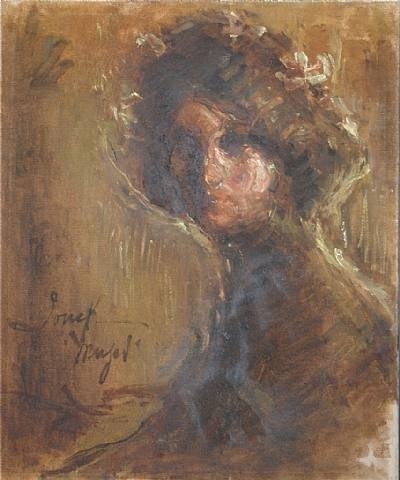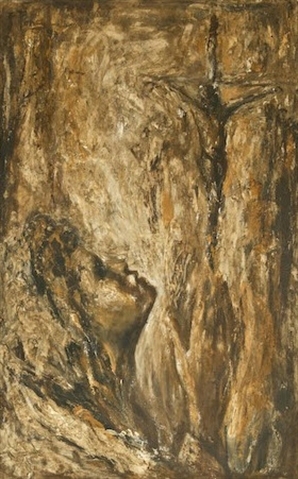Fidelio Ponce de Leon (1895-1949)
Get a Ponce De Leon Certificate of Authenticity for your painting (COA) for your Ponce De Leon drawing.
For all your Ponce De Leon artworks you need a Certificate of Authenticity (COA) in order to sell, to insure or to donate for a tax deduction.
Getting a Ponce De Leon Certificate of Authenticity (COA) is easy. Just send us photos and dimensions and tell us what you know about the origin or history of your Ponce De Leon painting or drawing.
If you want to sell your Ponce De Leon painting or drawing use our selling services. We offer Ponce De Leon selling help, selling advice, private treaty sales and full brokerage.
We have been authenticating Ponce De Leon and issuing certificates of authenticity since 2002. We are recognized Ponce De Leon experts and Ponce De Leon certified appraisers. We issue COAs and appraisals for all Ponce De Leon artworks.
Our Ponce De Leon paintings and drawings authentications are accepted and respected worldwide.
Each COA is backed by in-depth research and analysis authentication reports.
The Ponce De Leon certificates of authenticity we issue are based on solid, reliable and fully referenced art investigations, authentication research, analytical work and forensic studies.
We are available to examine your Ponce De Leon painting or drawing anywhere in the world.
You will generally receive your certificates of authenticity and authentication report within two weeks. Some complicated cases with difficult to research Ponce De Leon paintings or drawings take longer.
Our clients include Ponce De Leon collectors, investors, tax authorities, insurance adjusters, appraisers, valuers, auctioneers, Federal agencies and many law firms.
We perform Fidelio Ponce de Leon art authentication, appraisal, certificates of authenticity (COA), analysis, research, scientific tests, full art authentications. We will help you sell your Fidelio Ponce de Leon or we will sell it for you.

Mystery shrouds the life of Fidelio Ponce de Leon, named by many as one of the most authentic Cuban painters of his era. His peers and fellow artists have also called him one of the best plastic artists of his time.
Born Alfredo Ramón Jesús de la Paz Fuentes Pons, the details of his life are at times sketchy. He studied at San Alejandro but it is not known if he finished his studies there. Ponce literally disappeared from the art scene from 1918-1923. It was later learned that he spent those years in a small town, teaching children to draw. During this time, it is also said that he was working in advertising, perhaps in Havana. There have even been rumors that he died of starvation, when in fact he died of complications due to tuberculosis.

Unlike many of his contemporaries, Ponce never ventured outside of Cuba for artistic training or inspiration. He traveled abroad to Russia and Mexico, but did not search for artistic instruction in Paris or other European art centers. He created almost all of his artwork in Cuba, and he received all of his formal instruction in Cuba as well. For this reason, many have called him one of the most authentic Cuban painters of his era.


It is said by some that Ponce was a very likable person, but it is also said that he was a sad man, and even an alcoholic. It is likely that there is truth to both, but his sadness is what mostly came through in his artwork. Oil paintings, ceramics, watercolors, charcoals, engravings and papier-mâché were all part of his oeuvre, but it is his oil paintings that he is known for.

A student of Romanach while at The San Alejandro Academy, he was very fond of using white space in his compositions. Religious imagery, such as Jesus and crucifixes, sad children and people sick with tuberculosis are major themes in his work. For example, “Figuras” shows his use of white and his somber themes.
Some of Ponce’s oil paintings venture towards the abstract, featuring dripping organic compositions. However, these compositions came much later in his career, between the mid to late 1040s.
Almost as common as his oil paintings are his charcoal sketches. Usually somberly themed, they are wispy portraits, which also utilize the white space that Ponce was so fond of.

Ponce’s style is hard to classify—whether Expressionist, Impressionist or Abstract, none would argue that he painted in the true Vanguard spirit. Today, some of his work is deteriorating due to his lack of knowledge on how to mix his oil paints; so authenticating his work has never been more important. The sooner it is in the hands of professionals, the sooner it may be restored or properly displayed.
Today Ponce’s work is housed in museums all over Cuba and has been sold to private collections for hundreds of thousands of dollars.
Still wondering about a Cuban painting in your family collection? Contact us…we are the Fidelio Ponce de Leon experts.
Reviews
1,217 global ratings
5 Star
4 Star
3 Star
2 Star
1 Star
Your evaluation is very important to us. Thank you.
